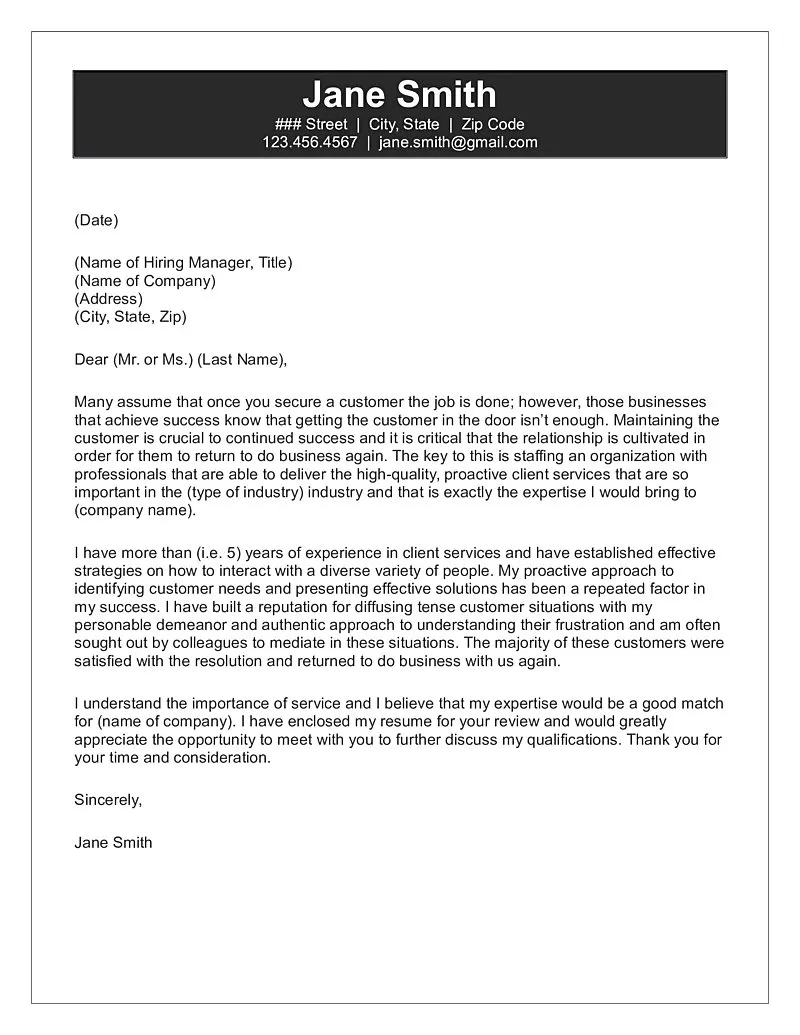Crafting a Customer Service Cover Letter
A well-crafted customer service cover letter is your first opportunity to make a positive impression on a potential employer. It serves as an introduction, a showcase of your skills, and a demonstration of your enthusiasm for the role. Unlike a resume, which provides a factual summary of your experience, the cover letter allows you to elaborate on your qualifications and express your personality. This guide will help you create a compelling cover letter that highlights your suitability for the customer service position and increases your chances of getting an interview. It’s a crucial step in any job search, particularly in the competitive field of customer service, where strong communication and interpersonal skills are paramount. The objective is to present yourself as a valuable asset, someone who not only possesses the necessary skills but also understands the company’s values and is eager to contribute to its success.
Understanding the Purpose of a Cover Letter
The primary purpose of a customer service cover letter is to persuade the hiring manager that you are the ideal candidate for the position. It allows you to connect your skills and experience with the specific requirements of the job. It’s your chance to explain why you are interested in the company, what you can offer, and how your values align with their mission. A cover letter complements your resume, providing context and depth to your qualifications. It also demonstrates your communication skills, professionalism, and attention to detail. A well-written cover letter is a clear indicator that you have taken the time to understand the job and are serious about the opportunity. It showcases your personality and passion, distinguishing you from other applicants who may rely solely on their resume to make an impression. The cover letter should reflect your unique strengths and highlight how they make you a perfect fit for the role.
Highlighting Relevant Skills for Customer Service
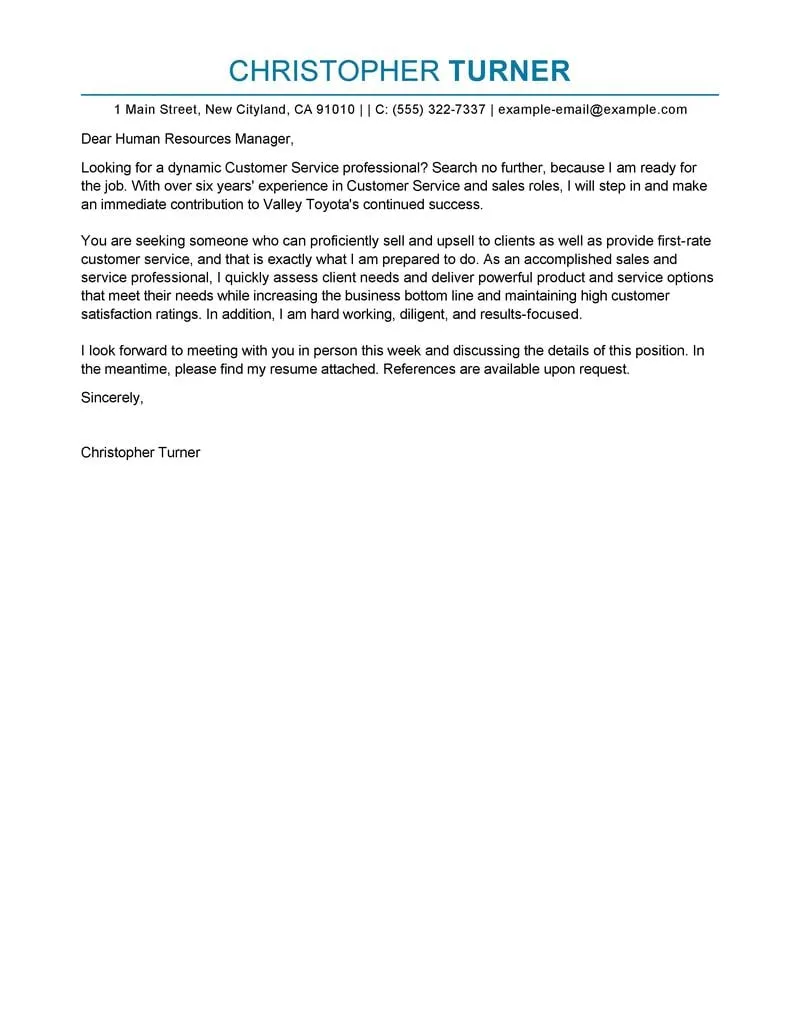
Customer service roles demand a specific set of skills. Your cover letter should clearly demonstrate that you possess these essential qualities. Start by reviewing the job description and identifying the key skills the employer is seeking. Then, provide specific examples from your past experiences that illustrate how you have used these skills effectively. Use action verbs to describe your accomplishments and quantify your achievements whenever possible. This will make your cover letter more persuasive and memorable. By highlighting relevant skills, you show the hiring manager that you not only understand the requirements of the role but also have a proven track record of success in a customer-facing environment. The goal is to paint a clear picture of how you will excel in the position and contribute to the company’s customer satisfaction goals.
Communication Skills
Effective communication is the cornerstone of excellent customer service. Showcase your ability to communicate clearly, concisely, and empathetically, both verbally and in writing. Mention your experience in active listening, asking clarifying questions, and adapting your communication style to suit different customer needs. Provide examples of how you have successfully resolved customer issues by explaining complex information in a simple and understandable manner. Highlight any training or certifications you have received in communication or conflict resolution. Demonstrate your proficiency in written communication by ensuring your cover letter is free of grammatical errors and typos, reflecting your attention to detail and professionalism. Showing you can communicate clearly builds trust and helps you connect with customers.
Problem-solving Abilities
Customer service often involves addressing and resolving problems. Highlight your ability to analyze situations, identify solutions, and implement them effectively. Provide examples of how you have successfully resolved customer complaints, troubleshooted technical issues, or found creative solutions to meet customer needs. Describe the steps you took to understand the problem, the strategies you employed, and the positive outcomes you achieved. Mention any experience you have with CRM systems, customer support software, or other tools that aid in problem-solving. Quantify your results whenever possible, such as the percentage of issues resolved or the improvement in customer satisfaction scores. Your ability to identify and resolve problems efficiently is a key indicator of your competence and value in a customer service role.
Empathy and Patience
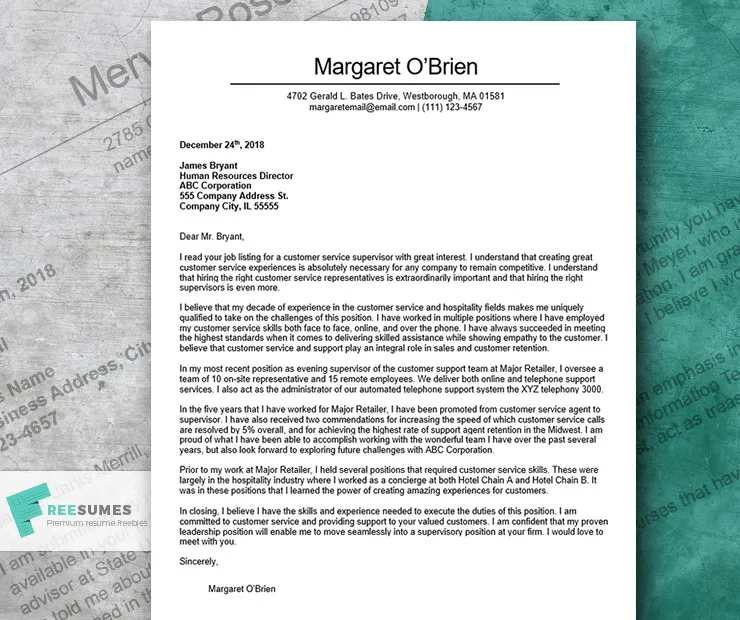
Customer service requires a high degree of empathy and patience. Demonstrate your ability to understand and respond to customer needs with sensitivity and compassion. Describe how you have handled difficult customers, remained calm under pressure, and de-escalated tense situations. Provide examples of how you have gone above and beyond to assist customers and ensure their satisfaction. Highlight any experience you have in active listening, showing that you can put yourself in the customer’s shoes and understand their perspective. Empathy and patience are crucial in building positive customer relationships and turning frustrated customers into loyal ones. The ability to connect with customers on an emotional level is invaluable in the customer service environment.
Key Elements of a Strong Cover Letter
A strong customer service cover letter should include several key elements to make a lasting impression. Each section serves a specific purpose and contributes to your overall goal of securing an interview. By including these components, you demonstrate your professionalism, attention to detail, and understanding of the job requirements. Careful structuring and thoughtful content will ensure your cover letter is engaging, informative, and persuasive. The goal is to create a cohesive and compelling narrative that showcases your skills, experience, and enthusiasm for the role. Make sure to personalize your cover letter to increase its impact.
Personalized Salutation
Always address your cover letter to a specific person whenever possible. Research the hiring manager’s name and use it in your salutation. For instance, use “Dear Ms. Smith,” rather than a generic greeting like “To Whom It May Concern.” This personalized approach shows that you have taken the time to research the company and understand who will be reviewing your application. If you are unable to find the hiring manager’s name, use a professional alternative, such as “Dear Hiring Manager,” or “Dear [Department] Team.” Avoid generic salutations, which can make your letter feel impersonal and less impactful. A personalized salutation sets a positive tone and indicates that you value the opportunity.
Compelling Introduction
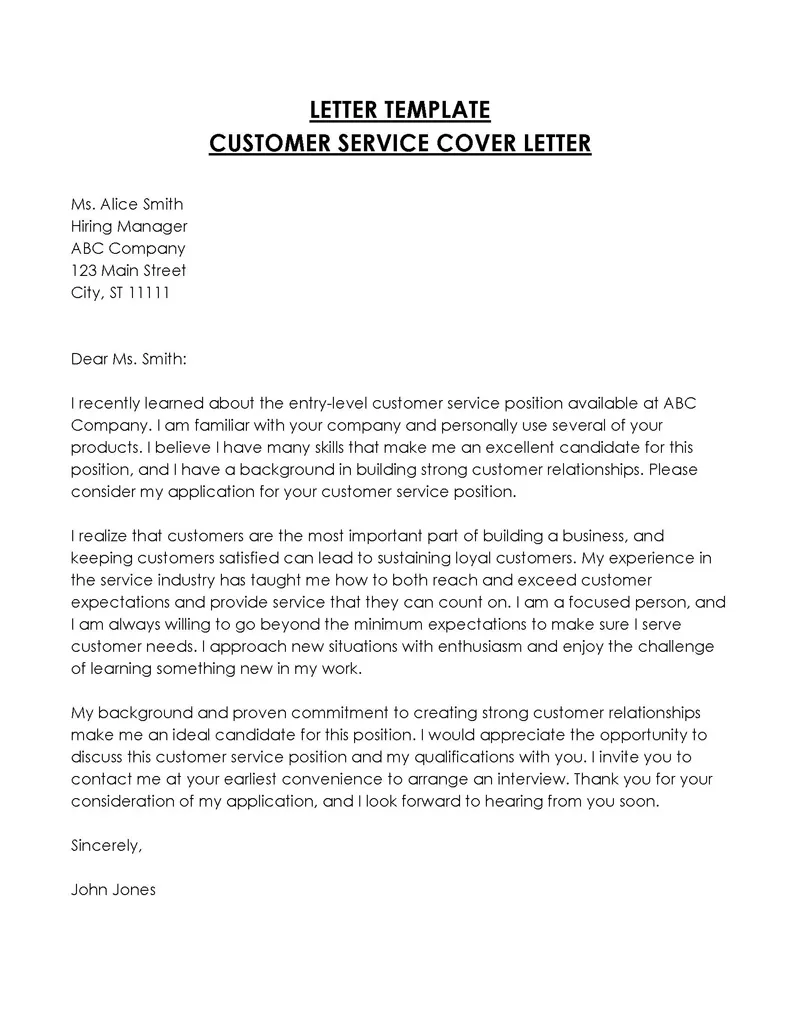
Your introduction should immediately grab the reader’s attention. State the position you are applying for and where you saw the job posting. Briefly mention why you are interested in the company and the role. Consider including a brief statement about your key qualifications or a notable achievement that aligns with the job requirements. Avoid generic opening statements that could apply to any job. Instead, make your introduction specific and engaging. Make it clear from the start why you are a good fit for the role. The introduction should set the tone for the rest of the letter and encourage the hiring manager to continue reading. It is your chance to make a strong first impression and highlight your enthusiasm.
Showcasing Achievements
Instead of simply listing your responsibilities, focus on showcasing your achievements. Describe how you have made a positive impact in previous roles. Use specific examples to illustrate your skills and experience. Quantify your achievements whenever possible to demonstrate your impact. For instance, instead of saying “Improved customer satisfaction,” state “Improved customer satisfaction scores by 15%.” Provide concrete examples of how you have resolved customer issues, exceeded expectations, or contributed to team goals. Emphasize any awards, recognition, or positive feedback you have received. Use the STAR method (Situation, Task, Action, Result) to structure your examples and provide a clear narrative of your accomplishments. This will demonstrate your value and set you apart from other applicants.
Quantifying Your Accomplishments
Quantifying your accomplishments adds credibility and impact to your cover letter. Use numbers and data to illustrate your achievements. For example, if you reduced customer complaints, state the percentage reduction or the number of complaints eliminated. If you improved response times, specify the amount of time saved. When describing sales figures, mention the percentage increase or the total revenue generated. Quantifiable results provide concrete evidence of your abilities and demonstrate the value you can bring to the company. Even if you don’t have direct numerical data, consider using metrics such as customer satisfaction ratings, positive feedback, or the number of customers served. The more specific you are, the more convincing your cover letter will be. By quantifying your accomplishments, you make it easier for the hiring manager to understand your value.
Expressing Enthusiasm
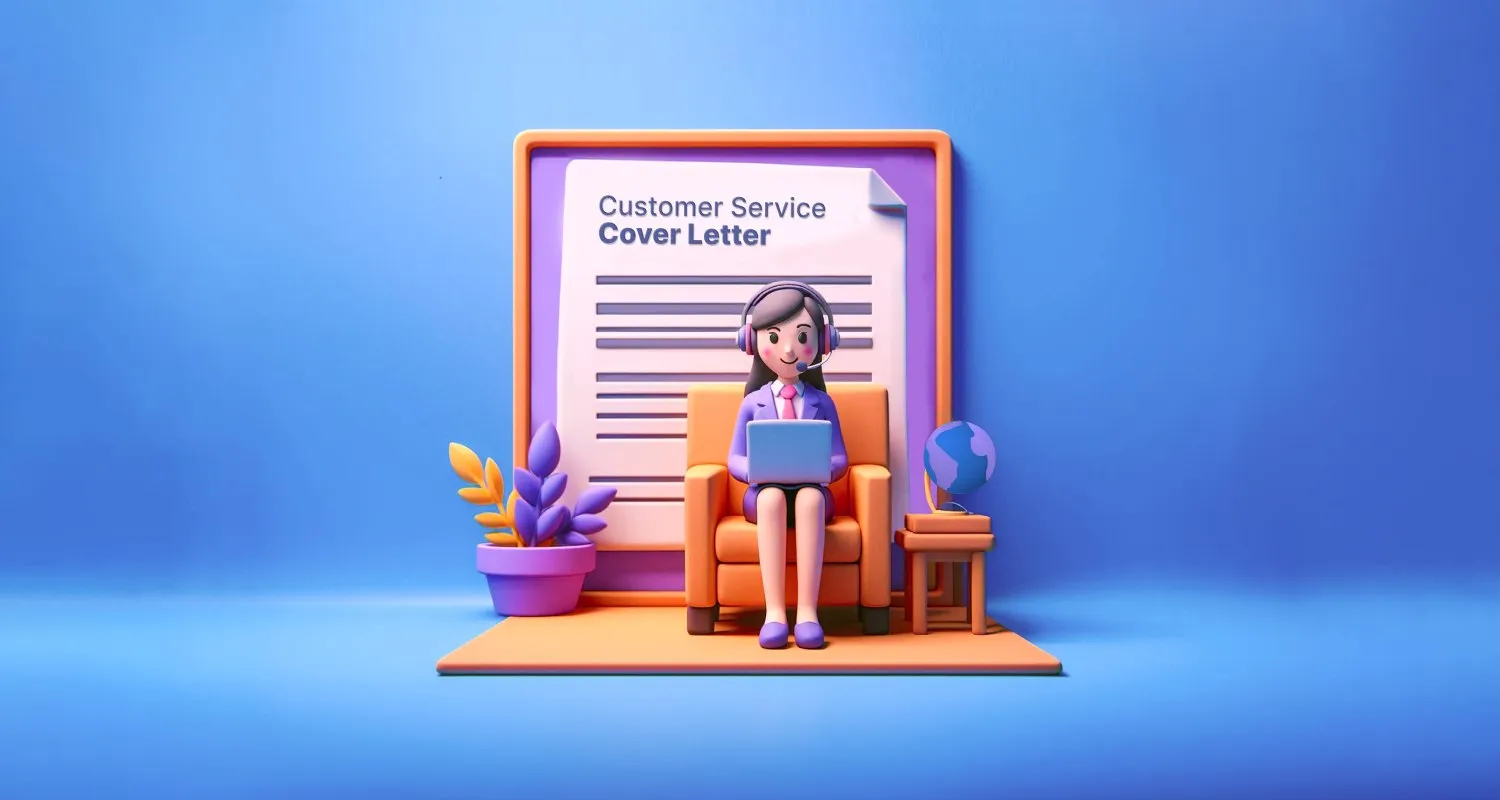
Show your genuine interest in the company and the customer service position. Mention what attracts you to the company’s mission, values, or products/services. Explain why you are interested in the specific role and how your skills and experience align with the job requirements. Demonstrate your enthusiasm by highlighting your knowledge of the company and your eagerness to contribute to its success. Avoid generic statements about wanting a “new challenge” or a “great opportunity.” Instead, be specific about what excites you about the company and the role. Your enthusiasm should be evident throughout the cover letter, from the introduction to the closing. Expressing your enthusiasm helps you connect with the hiring manager and makes your application more memorable. It signals that you are genuinely invested in the opportunity.
Professional Closing
End your cover letter with a strong and professional closing. Reiterate your interest in the position and thank the hiring manager for their time and consideration. Include a call to action, such as expressing your eagerness to discuss your qualifications further in an interview. State that you have attached your resume for review. Use a professional closing, such as “Sincerely,” “Respectfully,” or “Best regards,” followed by your full name. Avoid overly casual or informal closings. Ensure your contact information is included, making it easy for the hiring manager to reach you. A well-crafted closing leaves a lasting positive impression and encourages the hiring manager to take the next step in the hiring process. The closing is your final opportunity to reinforce your interest and make it clear that you are ready to proceed.
Formatting Your Cover Letter for Success
The formatting of your cover letter is just as important as the content. Proper formatting makes your letter easy to read and demonstrates your professionalism. Pay attention to the layout, font, and overall appearance of your cover letter. A well-formatted cover letter shows that you pay attention to detail and take your application seriously. By adhering to formatting best practices, you enhance the readability of your cover letter and make it more appealing to the hiring manager. Proper formatting will also reflect your professionalism.
Choosing the Right Font and Style
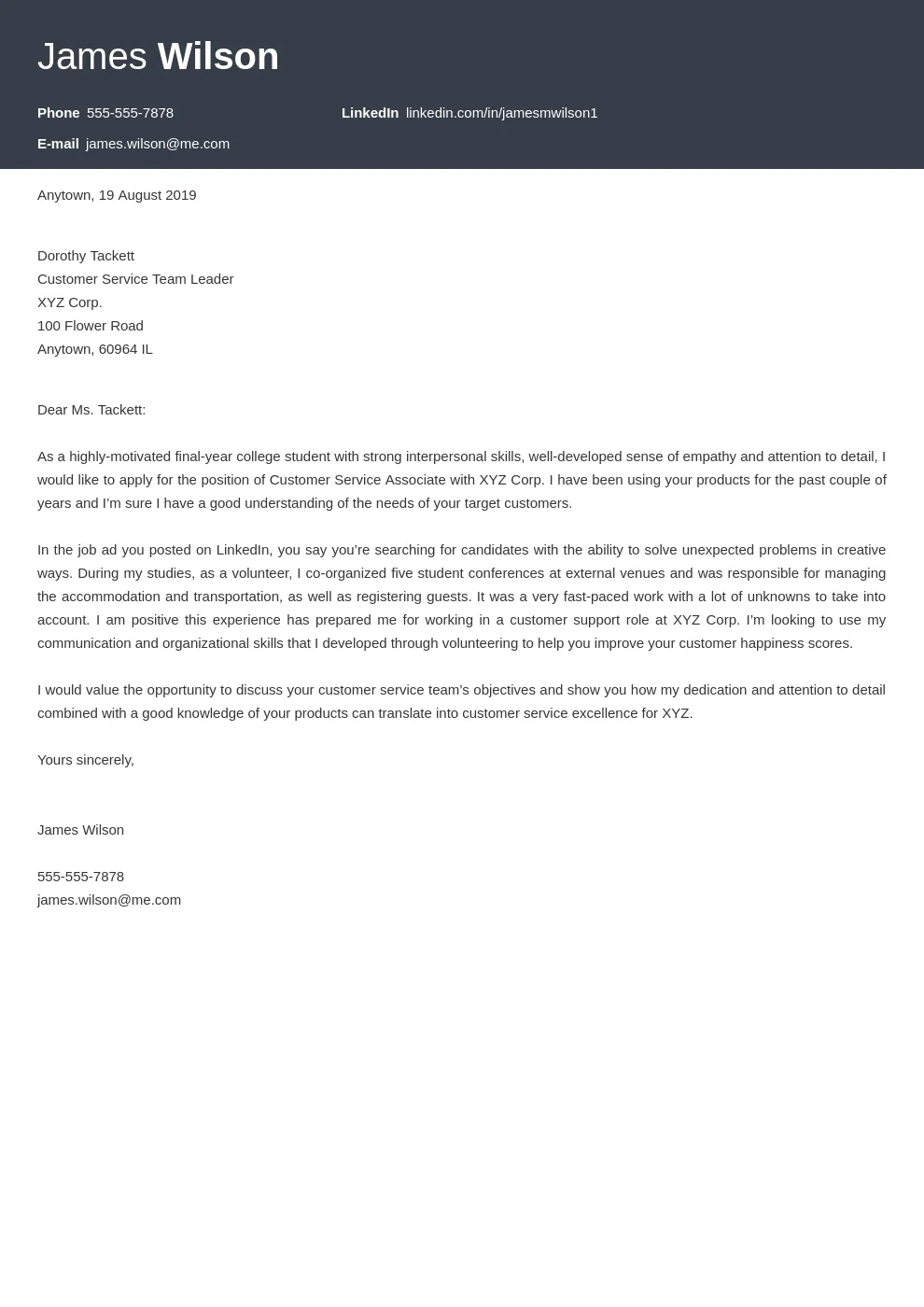
Choose a professional and easy-to-read font, such as Times New Roman, Arial, or Calibri. Maintain a consistent font size, typically between 11 and 12 points. Use a clean and simple layout. Avoid using overly decorative fonts or styles that distract from the content. Use standard margins (1 inch on all sides) and single-space the text. Use a formal tone, avoiding slang, jargon, or overly casual language. Ensure your cover letter is well-organized with clear headings and paragraphs. Use bullet points for lists to improve readability. A well-formatted cover letter is visually appealing and makes a positive impression. Proper formatting will increase your chance of getting an interview.
Proofreading and Editing
Proofread your cover letter carefully for any grammatical errors, typos, or inconsistencies. Errors can create a negative impression and undermine your credibility. Read your cover letter aloud to catch any awkward phrasing or sentence structure. Ask a friend, family member, or career advisor to review your cover letter. Pay attention to spelling, punctuation, and grammar. Check the accuracy of the company name, job title, and hiring manager’s name. Ensure that your contact information is correct and up-to-date. A polished and error-free cover letter demonstrates your attention to detail and professionalism. Proofreading is an essential step in the job application process.
Tailoring Your Cover Letter
A generic cover letter is unlikely to impress a hiring manager. To increase your chances of success, tailor your cover letter to each job you apply for. Take the time to understand the specific requirements of the role and customize your letter accordingly. By tailoring your cover letter, you demonstrate your genuine interest in the company and the specific position. It also shows that you have taken the time to understand the job requirements and are serious about the opportunity. Tailoring your letter will make your application stand out and increase your chances of getting an interview.
Researching the Company
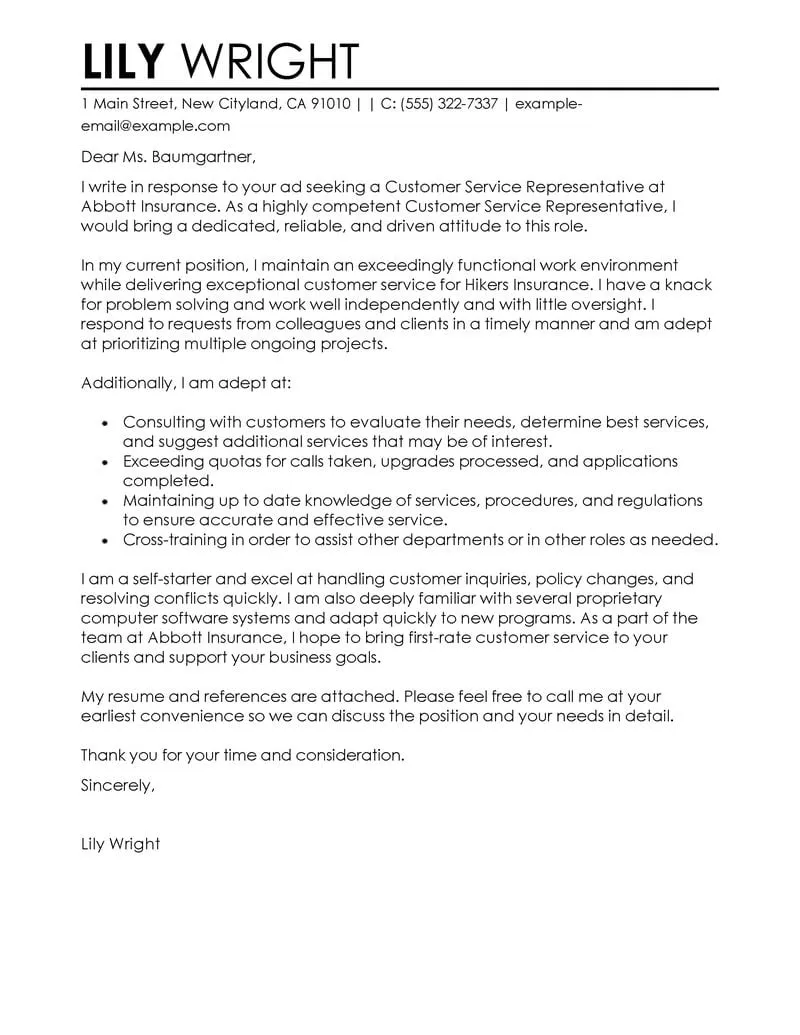
Before writing your cover letter, research the company. Visit their website, read about their mission and values, and understand their products or services. Identify the company’s culture and any recent news or developments. This research will help you tailor your cover letter to the company’s specific needs and demonstrate your genuine interest. Use your research to highlight how your skills and experience align with the company’s values and goals. Mentioning specific company information in your cover letter shows that you have done your homework and are serious about the opportunity. You can also tailor your letter to demonstrate why you want to work for the company specifically.
Adapting to Job Requirements
Carefully review the job description and identify the key skills and qualifications the employer is seeking. Highlight your relevant skills and experience, using the same keywords and phrases that are used in the job description. Customize your cover letter to address the specific needs and requirements of the role. Provide examples of how you have demonstrated these skills in previous roles. Show how you can solve problems for the company. Emphasize how you will contribute to the company’s success. Tailoring your cover letter to the job requirements shows that you understand the role and are a good fit for the position. Customize your letter and you will increase your chance of getting the job.
Examples of Customer Service Cover Letter Sections
To effectively craft your customer service cover letter, it’s beneficial to have examples of different sections. These examples provide guidance and inspiration for writing your own letter. You can modify these examples to showcase your unique skills, experience, and personality. Using examples ensures you include the necessary information. These examples will help you structure your letter and communicate your key qualifications.
Opening Paragraph Examples
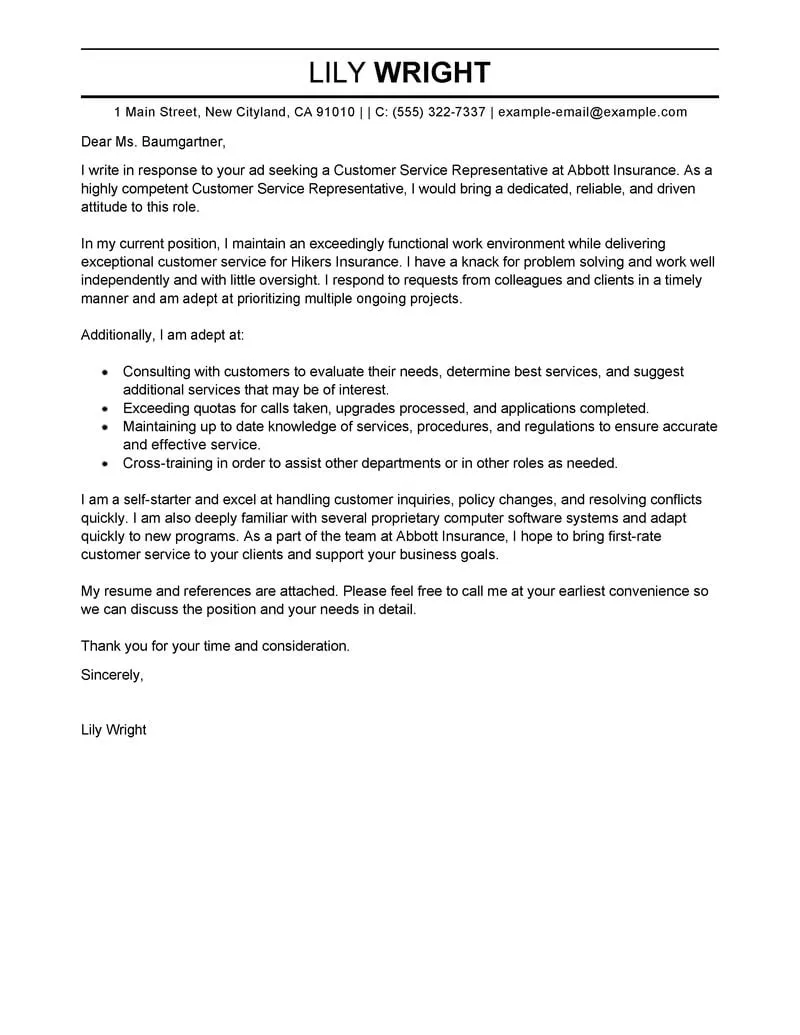
Here are a few examples of effective opening paragraphs
Example 1 (Highlighting Experience) Dear [Hiring Manager Name], I am writing to express my enthusiastic interest in the Customer Service Representative position at [Company Name], as advertised on [Platform]. With [Number] years of experience in customer service, I have consistently exceeded expectations in resolving customer issues and ensuring satisfaction.
Example 2 (Expressing Enthusiasm) Dear Hiring Manager, I am excited to apply for the Customer Service position at [Company Name], as seen on [Platform]. Your company’s commitment to [Company Value] deeply resonates with my own values, and I am eager to contribute to your team.
Example 3 (Referring to a Connection) Dear [Hiring Manager Name], I am writing to apply for the Customer Service Representative role at [Company Name], as recommended by [Referral Source]. My skills in customer support and passion for helping others make me a strong fit for this position.
Skills and Achievements Section Examples
Here’s an example of a skills and achievements section
“Throughout my career, I have consistently demonstrated the ability to provide outstanding customer service. In my previous role at [Previous Company], I achieved the following Resolved over 90% of customer issues on the first contact, reducing customer complaints by 20%. Consistently received positive feedback from customers, with an average customer satisfaction score of 4.8 out of 5. Implemented a new customer support process that reduced response times by 15%.” These examples highlight specific achievements and quantifiable results to demonstrate your effectiveness.
Closing Paragraph Examples
Here are example of closing paragraph
Example 1 (Simple Closing) I am eager to learn more about this opportunity and discuss how my skills and experience can benefit [Company Name]. Thank you for your time and consideration. I have attached my resume for your review and look forward to hearing from you soon.
Example 2 (Emphasizing Skills) I am confident that my communication skills, problem-solving abilities, and dedication to customer satisfaction align perfectly with the requirements of this position. Thank you for your time, and I look forward to the possibility of discussing my application further. My resume is attached for your review.
Example 3 (Reiterating Interest) I am particularly drawn to [Company Name]’s commitment to [Company Value], and I am excited about the prospect of contributing to your team. Thank you for your time and consideration. I look forward to the opportunity to discuss my qualifications in an interview. My resume is attached for your review.
Common Mistakes to Avoid
Avoid these common mistakes. Make sure to put the time and effort to stand out, and make sure you are not doing anything to hurt your chance of getting the job.
Generic Letters
Avoid sending a generic cover letter that could be used for any job. A generic letter shows a lack of interest in the specific role and company. Take the time to tailor your cover letter to each job you apply for. Research the company, identify the key requirements of the role, and highlight your relevant skills and experience. Demonstrate your genuine interest in the company and the position. A generic letter can be easily identified and will likely result in your application being rejected.
Typos and Grammatical Errors
Typos and grammatical errors can damage your credibility and create a negative impression. Proofread your cover letter carefully before submitting it. Use spell-check and grammar-check tools to catch any mistakes. Read your cover letter aloud to catch any awkward phrasing or sentence structure. Ask a friend, family member, or career advisor to review your cover letter. An error-free cover letter demonstrates your attention to detail and professionalism. Make sure to proofread the letter because mistakes could reduce your chance of getting an interview.
Ignoring the Job Description
Do not ignore the job description. The job description provides valuable information about the required skills, qualifications, and responsibilities of the role. Carefully review the job description and address the specific requirements in your cover letter. Use keywords and phrases from the job description to demonstrate that you have the necessary skills and experience. Highlight your relevant accomplishments and show how you can contribute to the company’s success. Failing to address the job description can make your application appear irrelevant. You will not get an interview if you don’t follow this step.
Tips for Standing Out
In a competitive job market, it’s important to take steps to stand out from other applicants. These tips will help you highlight your unique skills, experience, and personality to increase your chances of success. By implementing these strategies, you will make your cover letter more memorable and impactful. Try these tips and see if you notice a change in your results.
Using Keywords
Incorporate keywords from the job description into your cover letter. This will help your application pass through applicant tracking systems (ATS) and catch the attention of the hiring manager. Identify the key skills and qualifications the employer is seeking. Use these keywords naturally throughout your cover letter. Do not stuff your cover letter with keywords. Be sure to maintain a natural tone and focus on communicating your skills and experience effectively. Using the right keywords will increase your visibility and improve your chances of being noticed.
Adding a Personal Touch
Add a personal touch to your cover letter to make it more memorable and show your personality. Share a brief anecdote or story that illustrates your skills or experience. Mention why you are interested in the company and the specific role. Highlight any unique qualities or skills that set you apart from other applicants. Injecting your personality makes your cover letter more engaging and helps you connect with the hiring manager on a personal level. Adding a personal touch can make your cover letter more memorable and increase your chances of getting an interview.
